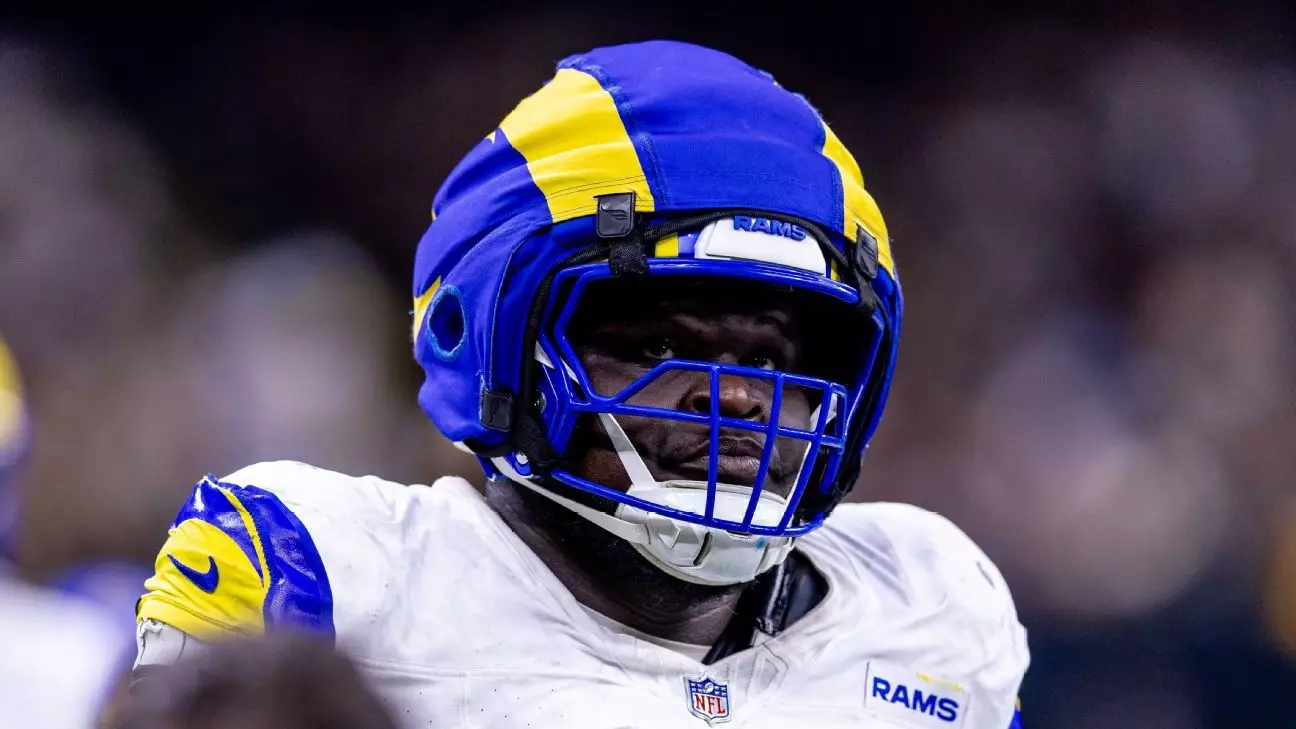The National Football League (NFL) has made noteworthy strides in reducing concussions on the field this season, marking a significant moment in the organization’s ongoing mission to enhance player safety. The data indicates a decrease in concussions to the lowest level recorded since the league began collecting this information in 2015, highlighting a multifaceted approach to a complex and serious issue. While the decline is praiseworthy, football’s inherent risks require continuous vigilance and a commitment to further innovations.
With a total of 182 documented concussions during games and practices this season, the NFL has achieved a remarkable 17% reduction compared to last year’s figures. This includes both the preseason and regular season, a time when players are most vulnerable, and previous lows of 187 concussions in 2022 had raised concerns among players, coaches, and health professionals alike. Notably, the average number of concussions recorded over the past five years, excluding the unusual 2020 season impacted by COVID-19, stood at approximately 211.4 yearly.
Dr. Allen Sills, the NFL’s chief medical officer, expressed optimism about the improvement but emphasized that much work remains. His assertion underscores the critical nature of ongoing efforts to make the game as safe as possible. The decrease in concussion incidents is a welcome development, yet it should serve as a catalyst for further research and focused interventions aimed at protecting athletes and preserving the integrity of the sport.
Several factors have contributed to this downward trend in concussions. The NFL’s strategy has involved an emphasis on improved helmet designs and enhanced protective gear, most notably the mandatory installation of Guardian Caps during training camp and practices for the majority of players. The Guardian Cap, designed to mitigate impacts to the head, has emerged as a key player in reducing concussion occurrences.
Sills noted a staggering 43% reduction in concussion rates resulting from new kickoff strategies. However, despite this promising statistic, the raw numbers reflected a constant total of eight concussions attributed to kickoffs between 2023 and 2024, indicating the need for a nuanced understanding of player safety improvements, given that the overall number of returns increased during this period.
An encouraging point revealed was that 35% of players opted for helmets providing superior protection, a notable leap from usual adoption rates, which range between 14% and 17%. This suggests a growing awareness among players regarding the importance of protective equipment, representing a shift in culture that could potentially lead to further drops in concussion cases.
The league has undertaken systemic policy changes aimed at enhancing player safety. The effectiveness of Guardian Caps has been underscored by reports of a 50% reduction in concussions among those who wore them during practice, and exemptions from Guardian Cap mandates for certain high-performing helmets indicate a proactive approach towards encouraging innovation in protective gear.
Moreover, the NFL has developed an additional metric to monitor helmet impacts, focusing on plays where players are traveling at 15 miles per hour or faster. Preliminary data reveals a striking 26-fold increase in concussion rates during these scenarios, underscoring the need for continuous adaptation of policies around play styles and safety protocols.
Although there have been no penalties for violating the new hip-drop tackle rule on-field, about 30 players faced fines post-review. This reflects the league’s commitment to both rule enforcement and player education. As officials become increasingly skilled at identifying fouls in real-time, the emphasis on post-action accountability could become a vital tool for promoting player safety.
As the NFL strives to navigate the complexities of player health and safety, the reduction in concussions
is to be celebrated, even as stakeholders recognize the journey is far from complete. Collectively, coaches, players, medical professionals, and league officials must work together in a concerted effort, harnessing data-driven approaches and innovative technology to sustain and improve safety measures. The NFL’s progress in concussion reduction may signal a pivotal moment for the league, but it also serves as a clarion call for a sustained commitment to the health of its players and the future of the game itself.

